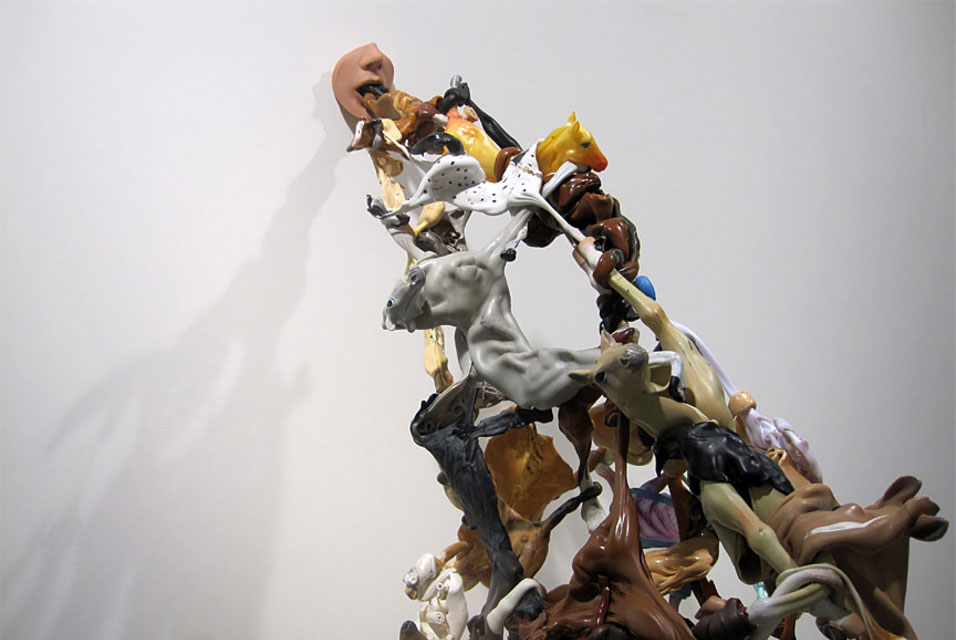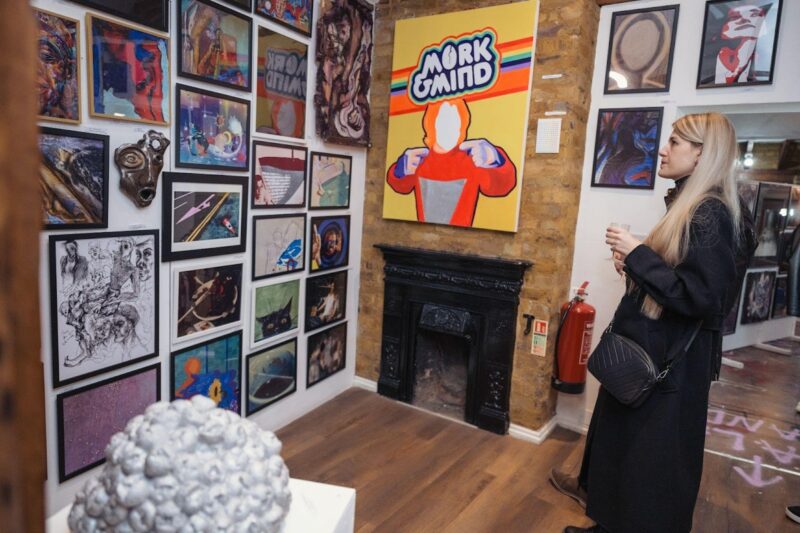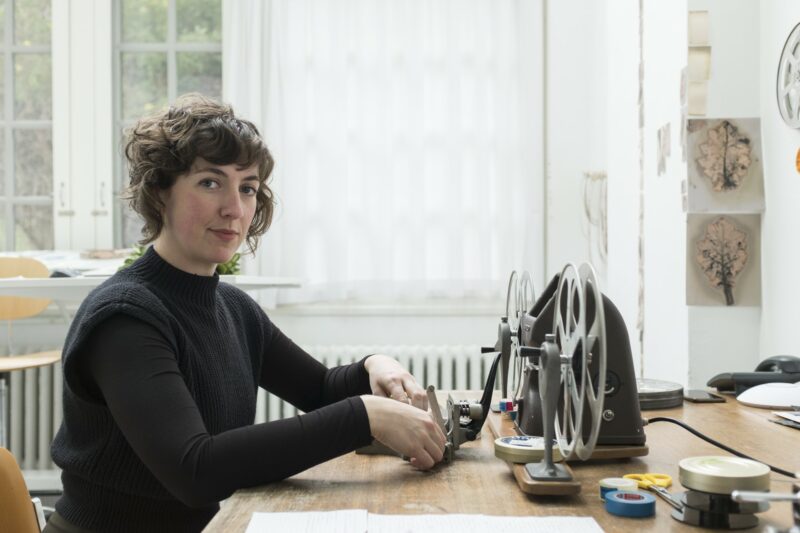
LONDON.- Shanabrook is constantly crossing the thin line dividing comfort and pain, beauty and death. The visual qualities of his work and the materials he uses have a calming effect on us. The apparently cute Easter bunnies remind us of our childhood, of the sweet taste of chocolate these forms are associated with. Seen from a distance, the trees and flowers from his ‘The Danger is all Mine’ series (2009) are of serene beauty. Yet Shanabrook’s work has a deeply unsettling quality, confronting us with both a disturbing social phenomenon and our own dark little secrets.
The central theme of Shanabrook’s new show, ‘In Pills We Trust’, is addiction. It is about the moment when something soothing and calming turns into the source of pain and suffering. ‘In Pills We Trust: Upper Bunny’ (2009) is made of hundreds of stimulants pressed into a mould used for chocolate Easter bunnies. It is one big dose of deceiving happiness in the form of a cute little chocolate bunny. It seems so harmless, yet it can prove to be so dangerous. ‘In Pills We Trust: Downer Bunny’ (2009) on the other hand is made of depressants, the functional opposite of stimulants. The pharmaceutical industry works hard to satisfy everyone.
For ‘Pharmaceutical Landscape’ (2009), Shanabrook has melted prescription pill bottles and pressed them into the form of Easter bunnies. We turn to prescription drugs for comfort, to cope with pain and reality. But while these drugs seem to promise simple solutions to our problems, they can become a problem themselves. According to the UN, the abuse of prescription drug has overtaken the use of nearly all illegal drugs with the sole exception of cannabis. Addiction to prescription drugs has become a major public health concern. It is a mass phenomenon that periodically becomes the subject of public discourse, especially after yet another death of some celebrity.
The blossoms in ‘The Danger is all Mine’ series (2009) are also made of melted pill bottles, while the branches of the trees are made of surgical scalpel blades. As we approach these works, the apparent beauty turns into physical danger. In this sense, this series is a powerful symbol of how the use of drugs can turn into a dangerous addiction. Moments as soft and pleasant as the drops of warm summer rain turn into heavy and unbearable memories, made out of sharp steel – ‘Blue Bird Syndrome: Twilight’ (2009).
‘Lithium Flower: Noon’ (2009) is composed of melted Lithium pill bottles. Lithium is a mood altering drug used in the treatment of bipolar disorder. ‘Lithium’ is also the title of a Nirvana song featured on the band’s groundbreaking album ‘Nevermind’ (1991). Frontman Kurt Cobain later explained that the song was about a man who, after the death of his girlfriend, turned to religion “as a last resort to keep himself alive. To keep him from suicide”. Seen this way, religion appears to be just another drug to help us cope with our existence.
This parallel between religion and drugs is another theme that Shanabrook explores. Like drugs, religion can be reassuring and comforting by giving meaning to one’s experience of life. Religion can inspire peace, but it can also be turned into fanaticism, bringing about death and destruction. In this way, it is similar to drugs: there is a thin line between salvation and suffering. Like drugs, religion can also be seen as being a pure illusion of happiness. As Karl Marx famously wrote:
Religion is the sigh of the oppressed creature, the heart of a heartless world, and the soul of soulless conditions. It is the opium of the people.
The abolition of religion as the illusory happiness of the people is the demand for their real happiness.
‘If Jesus Had Been an Abortion How Happy Would We Be’ (2009) addresses this double sidedness of religion, more specifically of Christianity. This gilt bronze sculpture is cast from a human fetus that was illegally aborted in the 1960s. The title is to be understood less as a statement than as a provocative question. According to the Christian faith, salvation is possible through belief in the death and resurrection of Jesus. In the same way, people believe that drugs can save them. However, these hopes are all too often disappointed.
When addressing Shanabrook’s work, one cannot ignore its biographical dimension. As the son of an obstetrician and coroner of a small Ohio town, he was exposed to the world of medicine from his early childhood. As a schoolboy, he worked in a chocolate factory. These childhood experiences are reflected in the materials he uses in his work. More importantly, Shanabrook has his own personal experiences with substance abuse and addiction. This aspect is very present. In general it seems that addiction is inseparable from an artist’s work. Martin Kippenberger’s art cannot be separated from the drug abuse and alcoholism that finally killed him. One might think of the German artist’s ‘Now I am Going Into the Big Birch Wood, My Pills Will Soon Start Working’ (1990) or ‘Zuerst die Füsse’ (1990), a sculpture of a crucified frog holding a mug of beer and an egg, a self-portrait of a self-destructive artist in a state of profound crisis.
Shanabrook’s art is the work of an addictive mind. His work is about the sweet and calming moments when consuming drugs, and the pain and suffering that this consumption can cause. It is about the highs and the lows of human existence. And it is about crossing thresholds – crossings that can prove fatal.
Via [ArtDaily]









